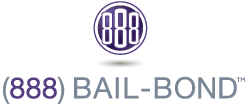In the wake of California's prisoner realignment program, county lockups have found themselves needing to resolve two key things. Number one, many of these facilities are old and in dire need of replacement or upgrades.
Number two- the detention centers need to better plan for how to hot only hold more inmates, but how to handle long-term housing, health care needs of those who are serving time.
Cutting incarceration rates and building new jails
Ever since realignment was implemented, county jails have found themselves needing to house an ever-growing number of people in a very limited space; because of that, many places throughout the state are starting to look at incarceration alternatives.
They are also looking to state grant funds to help them expand or construct brand new facilities. As it stands, California has earmarked roughly $1.7 million to help with construction projects. Sources say these funds will help add nearly 12,000 beds to CA detention centers.
Sources close to the expansion, however, say that more money may be needed. In the most recent round of grant applications a total of 36 counties requested funds but less than half of them received awards. They also point out that Gov. Jerry Brown supports building new jails and helping make sure there is space for programs that are geared toward reducing recidivism.
More capacity is definitely needed, they said, but planners also need to consider both short-term and long-term needs.
Looking at the facts
California hasn't built any new jails in the past nine years, and the total number of jail beds continues to sit at roughly 77,000. During that time, the state has frequently been functioning at overcapacity-- to the tune of 3,000 to 7,000 too many inmates.
Things got so bad that in June of last year that a total of 39 state jails got slapped with court-ordered population caps, which forced them to release detainees in order to make their numbers.
The jail population is also changing rapidly. In the past, many people were sentenced to county lockups for misdemeanor crimes; their sentences were less than a year.
Today, these facilities are holding state parole violators and persons convicted of felony crimes; their sentences are substantially longer. Jail violence is on the rise, as is the need for long-term medical and mental health care programs.
Others point out that in addition to the change in jail population the bulk of California's 123 jails are more than 44 years old; others were built in the 1950s, if not before. Since upgrading these facilities isn't quite possible based on their design, it's believed that it will cost more than $3 billion to replace them from the ground up.
This is why it's so important to look at the needs of the future in in addition to the needs of today.
Although there is always the chance that changes will take place within the criminal justice system that will impact statewide detention centers, there is also the possibility that crime and arrest trends could change as well. And while some counties are poised for what's been described as "substantial growth" in their inmate populations, others seem to be on track to reduce the number of inmates serving time.
So how will the state best deal with this problem? Some experts feel the best focus may be a combined approach of jail population management and facility expansions.
















Follow Us
Facebook
Twitter
Google +1
LinkedIn
Youtube